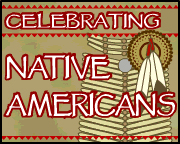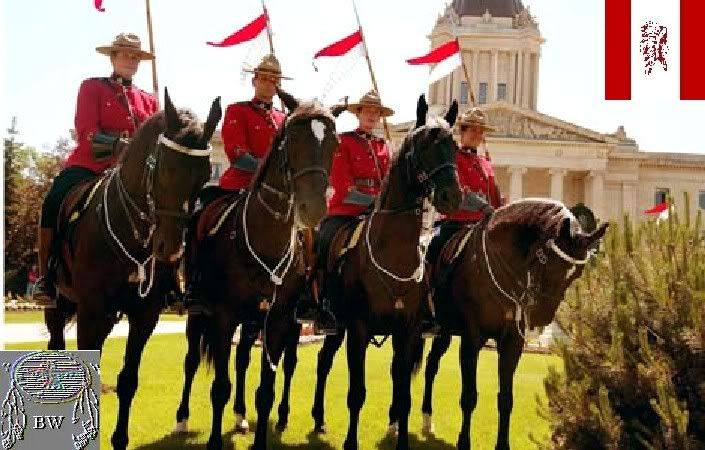|
BRAVEHORSE WARRIOR Hlakay Nkamapeleks Warrior   Chief Hlakay Warrior Citation HLAKAY (meaning “full grown or hardened antlers”; also known as Pierre, Pierre
Michel, Pierre Nequalla), Okanagan chief; son of Michel; m. Susan of the Penticton band, and they apparently had no children;
fl. 1906–16. Born about 1835 in Spallumcheen (B.C.) or Nkama’peleks at the head of Okanagan Lake, Hlakay, or Pierre
as he was generally known, was a descendant of the Okanagan chief Nicola [Hwistesmetxŵ’qen]. His significance dates
from after the turn of the century, when politics on the Okanagan reserve were degenerating into chaos. Appointed chief of
the Nkama’peleks or Head of the Lake band in September 1907, Pierre lost the position in December 1908 after a disagreement
with Native American agent Archibald Irwin over the irregular sale of part of the reserve on Long (Kalamalka) Lake, east of
Okanagan Lake. Although he may have initially promoted the idea, Pierre refused Irwin’s demand for his concurrence,
writing (through a translator) that “most of the people are against the selling of that land.” He also challenged
Irwin’s authority to dismiss him, especially since his interim replacement, Isaac Harris, was not a band member under
the Native American Act and because Harris’s actions were “inimical to the interests of the band.” Chief
Pierre and others hired a lawyer to represent them and report on the behaviour of Irwin and Harris. The resulting series of
letters to the Department of Native American Affairs led to a new election, in March 1909. Baptiste Logan became chief, but
in April 1910 Pierre and 15 others protested his continuance, charging him with intemperance. Native American Affairs inspector
Thomas J. Cummiskey investigated and, advised by two hereditary chiefs, Johnnie Chilleheetsa of Douglas Lake and Louis Clexlixqen
of Kamloops, he had Logan deposed. Irwin too was dismissed, in 1911. Concerned about the legitimation of chiefs, Chilleheetsa
intervened in the ensuing selection of a new chief, claiming that only descendants of Nicola were eligible. A highly public
affair, the election of 27 June 1912 was attended by hereditary chiefs, Oblate missionary Jean-Marie-RaphaŽl Le Jeune, and
Native American Affairs representatives in a deliberate attempt to buttress the authority of Pierre, who was elected for an
indefinite term. Chief Hlakay Warrior Citation HLAKAY (meaning “full grown or hardened antlers”; also known as Pierre, Pierre
Michel, Pierre Nequalla), Okanagan chief; son of Michel; m. Susan of the Penticton band, and they apparently had no children;
fl. 1906–16. Born about 1835 in Spallumcheen (B.C.) or Nkama’peleks at the head of Okanagan Lake, Hlakay, or Pierre
as he was generally known, was a descendant of the Okanagan chief Nicola [Hwistesmetxŵ’qen]. His significance dates
from after the turn of the century, when politics on the Okanagan reserve were degenerating into chaos. Appointed chief of
the Nkama’peleks or Head of the Lake band in September 1907, Pierre lost the position in December 1908 after a disagreement
with Native American agent Archibald Irwin over the irregular sale of part of the reserve on Long (Kalamalka) Lake, east of
Okanagan Lake. Although he may have initially promoted the idea, Pierre refused Irwin’s demand for his concurrence,
writing (through a translator) that “most of the people are against the selling of that land.” He also challenged
Irwin’s authority to dismiss him, especially since his interim replacement, Isaac Harris, was not a band member under
the Native American Act and because Harris’s actions were “inimical to the interests of the band.” Chief
Pierre and others hired a lawyer to represent them and report on the behaviour of Irwin and Harris. The resulting series of
letters to the Department of Native American Affairs led to a new election, in March 1909. Baptiste Logan became chief, but
in April 1910 Pierre and 15 others protested his continuance, charging him with intemperance. Native American Affairs inspector
Thomas J. Cummiskey investigated and, advised by two hereditary chiefs, Johnnie Chilleheetsa of Douglas Lake and Louis Clexlixqen
of Kamloops, he had Logan deposed. Irwin too was dismissed, in 1911. Concerned about the legitimation of chiefs, Chilleheetsa
intervened in the ensuing selection of a new chief, claiming that only descendants of Nicola were eligible. A highly public
affair, the election of 27 June 1912 was attended by hereditary chiefs, Oblate missionary Jean-Marie-RaphaŽl Le Jeune, and
Native American Affairs representatives in a deliberate attempt to buttress the authority of Pierre, who was elected for an
indefinite term.  A council with civil, judicial, and police powers was a feature of Okanagan life under Oblate influence. Suspended, probably
after the Chirouse scandal of 1892 [see Paul Durieu], it was now reinstituted by Native American Affairs, supposedly to counteract
alcohol abuse on Head of the Lake Reserve. Chief Pierre and the council were reportedly “a power for good” in
this respect and in promoting agricultural development after years of decline in ranching and wheat farming. During his second
tenure Chief Pierre had opportunities to speak out on the most important issue facing British Columbia’s Native Americans
– aboriginal title and rights. In testimony on 4 Oct. 1913 before the royal commission on Indian affairs for the province
of British Columbia, Chief Pierre demanded that his reserve remain undiminished in size. At the same time he refused to concede
title: “I know myself our blood [was] spilt here first, and we are the right[ful] owners of the land.” Arguing
too that his people retained aboriginal rights to hunt and fish, he complained strongly about restrictive game and fishing
laws. He also represented his band at meetings of interior tribes who were attempting to have the issue of title considered
by the Judicial Committee of the Privy Council. During and after Pierre’s second term, the Nkama’peleks band continued
to be torn by factionalism, and his leadership was repeatedly challenged. Chief “Lame Pierre” – he reputedly
had a withered leg as a result of a sports injury – was attacked by Baptiste Logan and others in 1913 for being a “tool”
of Native American Affairs and for agreeing, without band consent, to the use of reserve land for an encampment of soldiers
of the British Columbia Horse. Pierre resigned as chief, probably in 1915; the circumstances are unknown, but his age may
have been a factor. Even then the criticism did not cease. In 1916 a band group claimed that he had been elected illegally
in 1912 and publicly accused him of drunkenness, implication in the sale at Long Lake Reserve, misappropriation of resources,
and dependence on “half breeds” who were not legitimate band members Pierre died about 1918 at Nkama’peleks.
He had been a traditional chief who, in his two tenures, was beset by the arbitrary exercise of power by representatives of
the Department of Native American Affairs and by factionalism and disorder on his reserve, much of it the result of the corruption
of local officials. He cooperated with other interior chiefs who attempted to keep their reserves intact, protect their aboriginal
rights to hunt and fish, and assert their rights to aboriginal title. From: historical accounts & records A council with civil, judicial, and police powers was a feature of Okanagan life under Oblate influence. Suspended, probably
after the Chirouse scandal of 1892 [see Paul Durieu], it was now reinstituted by Native American Affairs, supposedly to counteract
alcohol abuse on Head of the Lake Reserve. Chief Pierre and the council were reportedly “a power for good” in
this respect and in promoting agricultural development after years of decline in ranching and wheat farming. During his second
tenure Chief Pierre had opportunities to speak out on the most important issue facing British Columbia’s Native Americans
– aboriginal title and rights. In testimony on 4 Oct. 1913 before the royal commission on Indian affairs for the province
of British Columbia, Chief Pierre demanded that his reserve remain undiminished in size. At the same time he refused to concede
title: “I know myself our blood [was] spilt here first, and we are the right[ful] owners of the land.” Arguing
too that his people retained aboriginal rights to hunt and fish, he complained strongly about restrictive game and fishing
laws. He also represented his band at meetings of interior tribes who were attempting to have the issue of title considered
by the Judicial Committee of the Privy Council. During and after Pierre’s second term, the Nkama’peleks band continued
to be torn by factionalism, and his leadership was repeatedly challenged. Chief “Lame Pierre” – he reputedly
had a withered leg as a result of a sports injury – was attacked by Baptiste Logan and others in 1913 for being a “tool”
of Native American Affairs and for agreeing, without band consent, to the use of reserve land for an encampment of soldiers
of the British Columbia Horse. Pierre resigned as chief, probably in 1915; the circumstances are unknown, but his age may
have been a factor. Even then the criticism did not cease. In 1916 a band group claimed that he had been elected illegally
in 1912 and publicly accused him of drunkenness, implication in the sale at Long Lake Reserve, misappropriation of resources,
and dependence on “half breeds” who were not legitimate band members Pierre died about 1918 at Nkama’peleks.
He had been a traditional chief who, in his two tenures, was beset by the arbitrary exercise of power by representatives of
the Department of Native American Affairs and by factionalism and disorder on his reserve, much of it the result of the corruption
of local officials. He cooperated with other interior chiefs who attempted to keep their reserves intact, protect their aboriginal
rights to hunt and fish, and assert their rights to aboriginal title. From: historical accounts & records
|

